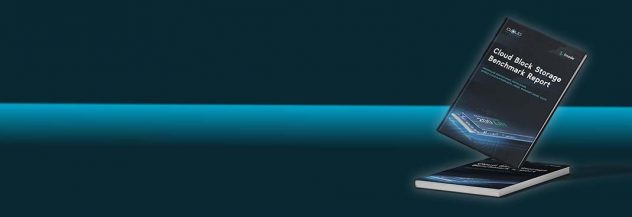Guides - Deploying a LEMP Stack through the Linode Marketplace
Quickly deploy a Compute Instance with many various software applications pre-installed and ready to use.
The LEMP stack (Linux, NGINX, MySQL, PHP) is a popular, free, and open-source web software bundle used for hosting websites on the Linux operating system. While similar to the LAMP Stack, a LEMP stack uses the NGINX web server instead of Apache. NGINX is preferred by many users for a variety of reasons, including its flexibility, speed, and ability to perform under high load.
Deploying a Marketplace App
The Linode Marketplace allows you to easily deploy software on a Compute Instance using the Cloud Manager. See Get Started with Marketplace Apps for complete steps.
Log in to the Cloud Manager and select the Marketplace link from the left navigation menu. This displays the Linode Create page with the Marketplace tab pre-selected.
Under the Select App section, select the app you would like to deploy.
Complete the form by following the steps and advice within the Creating a Compute Instance guide. Depending on the Marketplace App you selected, there may be additional configuration options available. See the Configuration Options section below for compatible distributions, recommended plans, and any additional configuration options available for this Marketplace App.
Click the Create Linode button. Once the Compute Instance has been provisioned and has fully powered on, wait for the software installation to complete. If the instance is powered off or restarted before this time, the software installation will likely fail.
To verify that the app has been fully installed, see Get Started with Marketplace Apps > Verify Installation. Once installed, follow the instructions within the Getting Started After Deployment section to access the application and start using it.
NoteEstimated deployment time: The LEMP stack should be fully installed within 2-5 minutes after the Compute Instance has finished provisioning.
Configuration Options
- Supported distributions: Debian 11, Ubuntu 20.04 LTS
- Recommended minimum plan: 1GB Shared Compute Instance or higher, depending on the number of sites and size of the sites you plan on hosting.
LEMP Stack Options
- Database Root Password (required): The root password for your LEMP stack’s MySQL database. This is not the same as the Linux root user password.
- Email address (required): Enter the email address to use for generating the SSL certificates.
Limited User (Optional)
You can optionally fill out the following fields to automatically create a limited user for your new Compute Instance. This is recommended for most deployments as an additional security measure. This account will be assigned to the sudo group, which provides elevated permission when running commands with the sudo prefix.
- Limited sudo user: Enter your preferred username for the limited user.
- Password for the limited user: Enter a strong password for the new user.
- SSH public key for the limited user: If you wish to login as the limited user through public key authentication (without entering a password), enter your public key here. See Creating an SSH Key Pair and Configuring Public Key Authentication on a Server for instructions on generating a key pair.
- Disable root access over SSH: To block the root user from logging in over SSH, select Yes (recommended). You can still switch to the root user once logged in and you can also log in as root through Lish.
Custom Domain (Optional)
If you wish to access your application using a custom domain, fill out the following fields.
- Linode API Token: If you wish to use the Linode’s DNS Manager to manage DNS records for your custom domain, create a Linode API Personal Access Token on your account with Read/Write access to Domains. If this is provided along with the subdomain and domain fields (outlined below), the installation attempts to create DNS records via the Linode API. See Get an API Access Token. If you do not provide this field, you need to manually configure your DNS records through your DNS provider and point them to the IP address of the new instance.
- Subdomain: The subdomain you wish to use, such as www for
www.example.com. - Domain: The domain name you wish to use, such as example.com.
Getting Started After Deployment
After your LEMP stack has finished deploying, you can view it and upload your own files using one of the methods below:
Log in to your new Compute Instance through Lish or SSH using either the
rootuser or limited user and the associated password you entered when creating the instance. Your application’s web files are located in the/var/www/htmldirectory.Navigate to the domain entered during the creation of the Linode instance. If you did not enter a domain, you can also use your Compute Instance’s rDNS, which may look like
123-0-123-0.ip.linodeusercontent.com. See the Managing IP Addresses guide for information on viewing and setting the rDNS value.Consult the following guides to learn more about working with the various components of the LEMP stack:
Upload files to your web root directory with an SFTP application like FileZilla. Use the same root credentials that you would use for SSH.
Software Included
The LEMP Stack Marketplace App installs the following software on your Compute Instance:
| Software | Description |
|---|---|
| NGINX | Web server that can be used to serve your site or web application. |
| MySQL Server | Relational database. |
| PHP 7.4 | General purpose programming language. |
| UFW (Uncomplicated Firewall) | Firewall utility. Ports 22/tcp and 80/tcp for IPv4 and IPv6 will allow outgoing and incoming traffic. |
NoteCurrently, Linode does not manage software and systems updates for Marketplace Apps. It is up to the user to perform routine maintenance on software deployed in this fashion.
More Information
You may wish to consult the following resources for additional information on this topic. While these are provided in the hope that they will be useful, please note that we cannot vouch for the accuracy or timeliness of externally hosted materials.
This page was originally published on





